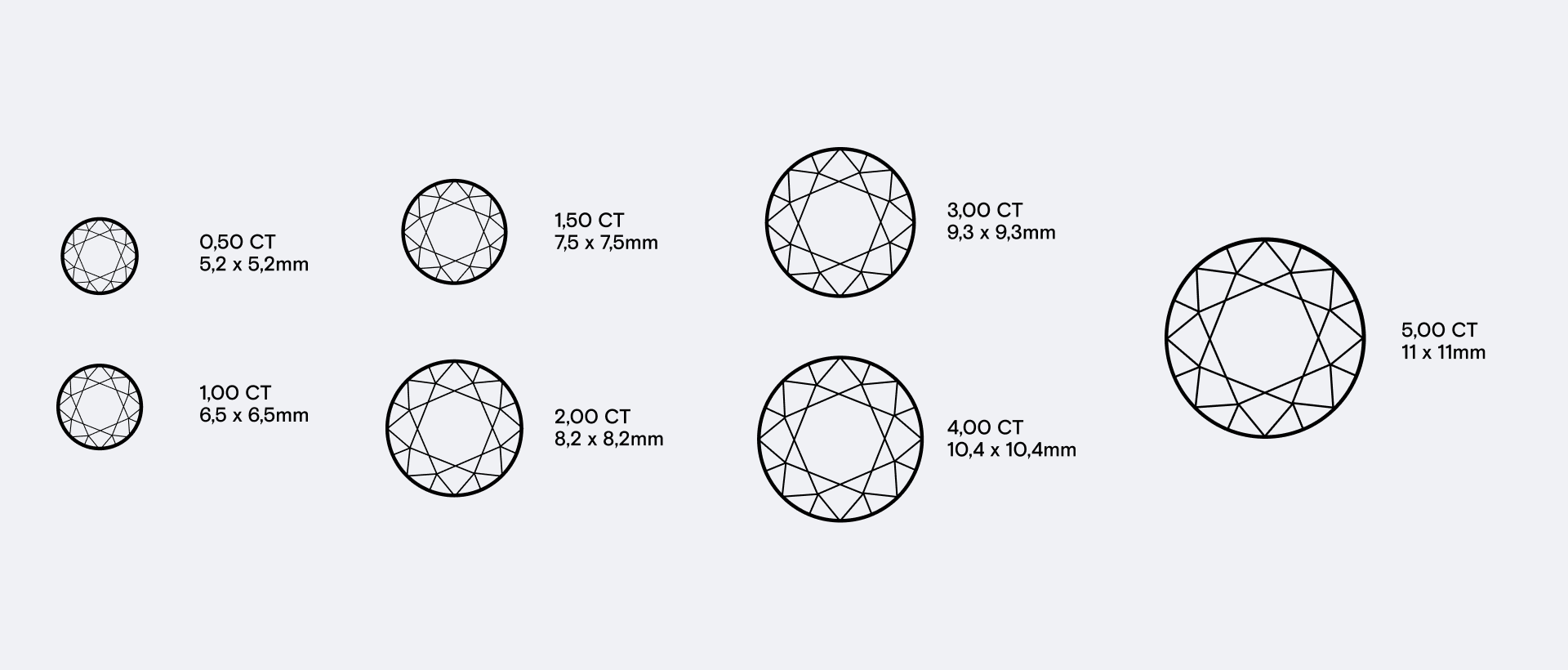Written by Clem | 18 October 2023
Shine bright like a diamond, as the song goes, but when you think of a diamond, what do you imagine? Probably a completely colourless stone – but it may surprise you to learn that diamonds come in a wide variety of hues, in all colours of the rainbow. Plus, no two fancy diamonds are the same, adding to their allure in jewellery. Senior Expert in Diamonds and Gemstones, Sara Sironi, tells us all we need to know about this elusive, exclusive stone – and how to choose one.
What is a fancy coloured diamond?
‘Fancy coloured diamond’ is the term used to describe diamonds that are not colourless (or white), and therefore cannot be graded on the colour scale from ‘D’ to ‘Z’. To be considered a fancy coloured diamond, the colour must be visible when the diamond is “face up” and they’re graded in:
- Hue – the visible colour
- Saturation – the intensity of colour
- Tone – the darkness or lightness of colour
Hue
As mentioned above, fancy diamonds come in many colours. Sara explains, “a diamond is ideally made of pure carbon in a very tight crystal lattice structure.” Sometimes, miniscule traces of other elements enter the formation process and the following colours appear:
- Yellow, orange and brown – traces of nitrogen
- Blue – traces of boron
However, diamonds can also become coloured based on other factors:
- Green – exposure to natural radiation
- Brown, orange, red and pink – deformations in the lattice structure
- Grey and black – black inclusions
- Purple and violet – traces of hydrogen, plus structural deformation
Yellow and brown diamonds are the most common fancy hues, whereas red is the rarest. Your perfect hue is all down to whatever you like the most, but bear in mind that, due to its rarity, a red diamond will usually be much more expensive than a yellow one.
Saturation
In addition to the colour of a fancy diamond, the Gemological Institute of America (GIA) – a global leader in gemstone certification – measures the saturation, or intensity, of colour, from least to most:
- ‘Fancy light’
- ‘Fancy’
- ‘Fancy intense’
- ‘Fancy vivid’
- ‘Fancy deep’
- ‘Fancy dark’
‘Fancy vivid’ diamonds are the most expensive, with value decreasing on either side of that saturation grade. Again, when buying your own diamond, the saturation you choose is down to you. A ‘fancy vivid’ diamond may cost more, but if you want just a hint of colour, a ‘fancy light’ grade might be just what you’re looking for.
Extra features to look out for
Overtone: A fancy diamond with a pure colour is incredibly hard to find and therefore, more expensive. Many fancy diamonds will have “a secondary tone, or overtone, that impacts the price of the diamond, because the pure colour is most in demand”, Sara explains. On the other hand, an overtone can result in beautiful subtleties that highlight the uniqueness of each stone, such as a blue diamond with a green overtone, or a pink stone with a purple or orange overtone.
Distribution: Aside from the hue or saturation, the distribution of the colour can also vary per diamond. The grade is either ‘even’ or ‘uneven’ – and as you might expect, a stone with an ‘uneven’ grade will not have one uniform colour throughout the entire stone.
Fluorescence: Finally, the last factor that affects a diamond’s colour is its fluorescence – or the glow of the stone. Sara explains, “fluorescence can be green or yellow, giving a stone a stronger colour.”
You can find all these details of a diamond in its certificate, but make sure you also look at the diamond itself. Each stone varies depending on the factors above and while some might make a diamond less valuable, it’s more important that it has the colour, overtone and distribution you find most attractive.

The ‘3 Cs’
All diamonds – including coloured diamonds – use the ‘3 Cs’ for grading: cut, clarity and carat (weight). Sara adds, “don’t be surprised to find fancy diamonds in unusual shapes, cut precisely to maximise the intensity of the colour".
Buying fancy coloured diamonds
Comparing diamond preferences around the world, it's noteworthy that fancy coloured diamonds aren't as popular in Europe as they are in Asia or the United States. “Europeans usually think of diamonds as white… Almost all antique and vintage jewellery feature white diamonds, so the tradition doesn’t exist there.”
So, why buy a fancy coloured diamond over a different – and more affordable – coloured gemstone? Diamonds are rare – and coloured diamonds are even more scarce, making them much more desirable. Sara concludes, “they are really rare and really bright. Nothing compares to the brightness of a diamond.”
This article only addresses natural diamonds, but colour treated diamonds can also be found on Catawiki.
The ‘4 Cs’ of diamonds explained
The most expensive diamonds in the world